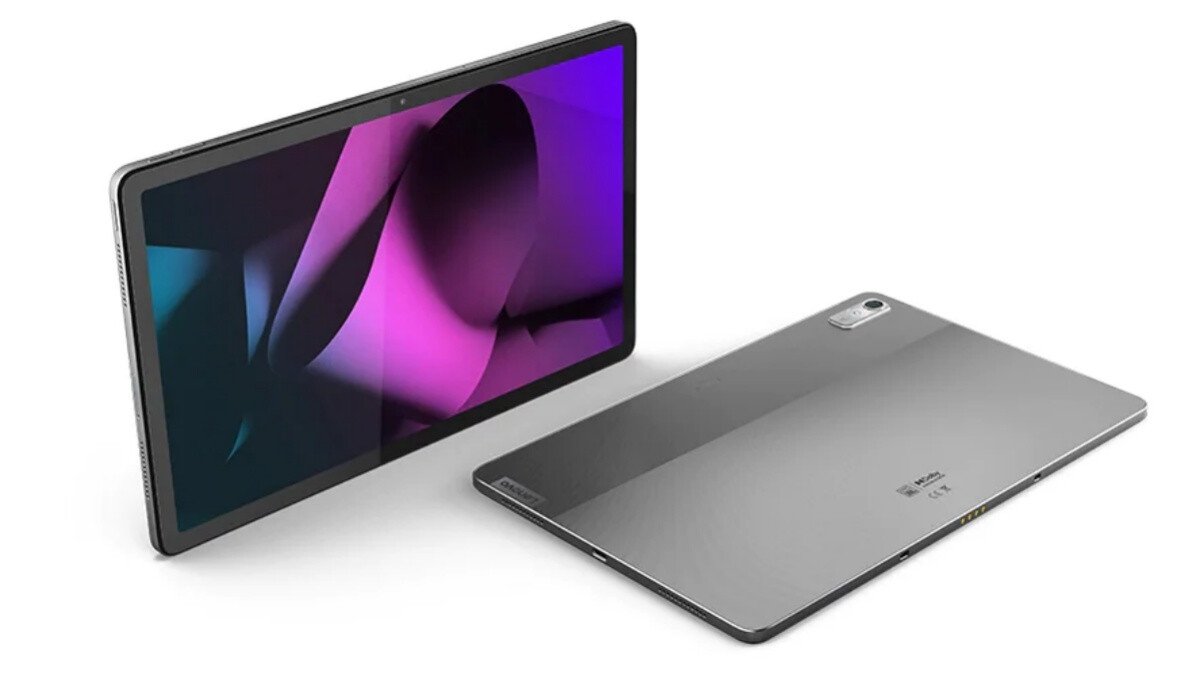A mid-range Android tablet called the Lenovo Tab P11 Pro is here to snag potential first-time iPad 10.2 or iPad 10.9 buyers who like the sound of a slightly larger screen.
Its 11.2in screen is slightly smaller than the 11.5in screen of the original Tab P11 Pro. The best panel is this one because it has a punchy, sharp OLED.
What’s left? Not quite as warm. Even the most basic 10.2in iPad is significantly more powerful than the Tab P11 Pro, and the use of a relatively infrequently used MediaTek chipset does not appear to help with game optimization.
The Samsung Galaxy Tab S6 Lite, which is less expensive and still the preferred option for non-iPad digital drawing on a budget, has a more aesthetically pleasing build than this tablet.
Lenovo hasn’t missed any crucial details in this regard, but the P11 Pro is a bit too expensive to push its way into any top rankings for customers. The price of the tablet by itself is too close to that of the iPad 10.9 to be comfortable, and for the same price as purchasing it along with the optional keyboard and stylus, you could purchase a respectable laptop in its place.
Table of Contents
Build and design
- Slim and not overly large
- brittle shell
- high-quality quad-driver speakers
From a distance and on paper, the Tab P11 Pro appears to be a premium tablet, but once you hold one in your hands, you’ll realise it’s not quite as high-end as an iPad Air or Samsung Galaxy Tab S8.
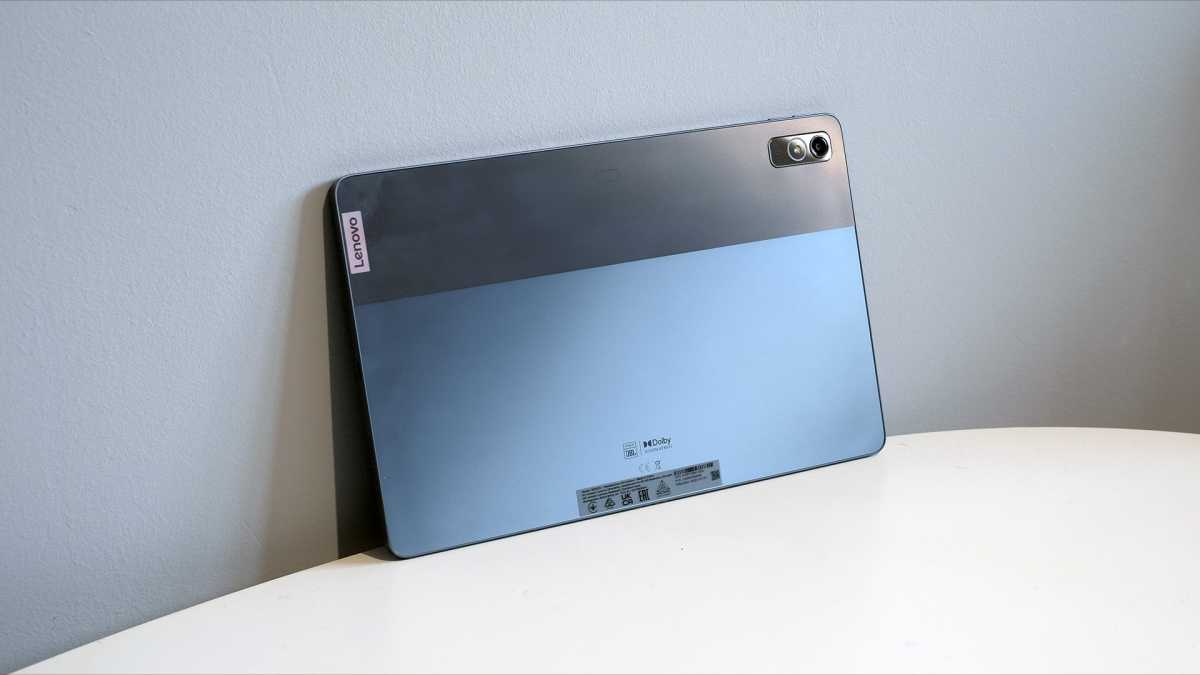
It feels like plastic on the sides and back. The construction is described by Lenovo as “magnesium alloy + PMMA + PC.” The rear is most likely a thin sheet of magnesium alloy with a layer of PMMA on top, and the sides are most likely “PC,” or polycarbonate. PMMA is acrylic, which in this context is a type of fake glass.
It feels less expensive than aluminium or genuine glass, but it still looks good—at least until it accumulates a thousand fingerprints after an hour of use.
Unfortunately, this was our initial impression of the P11 Pro. Even so, it weighs 480g, is 6.8mm thick, and is lightweight compared to the competition. With a two-tone finish, one side is glossier than the other, it also has a smart appearance.

The speakers, however, are the real focal point of the exterior hardware. There are four JBL-branded drivers on the Tab P11 Pro. They perform better in terms of midrange projection and bass power than the 4th generation iPad Air we used as a reference. Fantastic for both movies and video games.
It’s unfortunate that the audio focus does not include adding a headphone jack. Phones without outlets are one thing, but tablets? However, there is a microSD slot located in a SIM-style tray. According to reports, the state of portable Android tablet technology in 2022 will be expandable storage without a headphone jack.
If you purchase the keyboard case accessory, the Tab P11 Pro can also perform some functions similar to a laptop. Although the layout is similar to that of a Microsoft Surface Pro keyboard, the design is slightly different. Because the tablet lacks a stand of its own, it must be in two pieces.
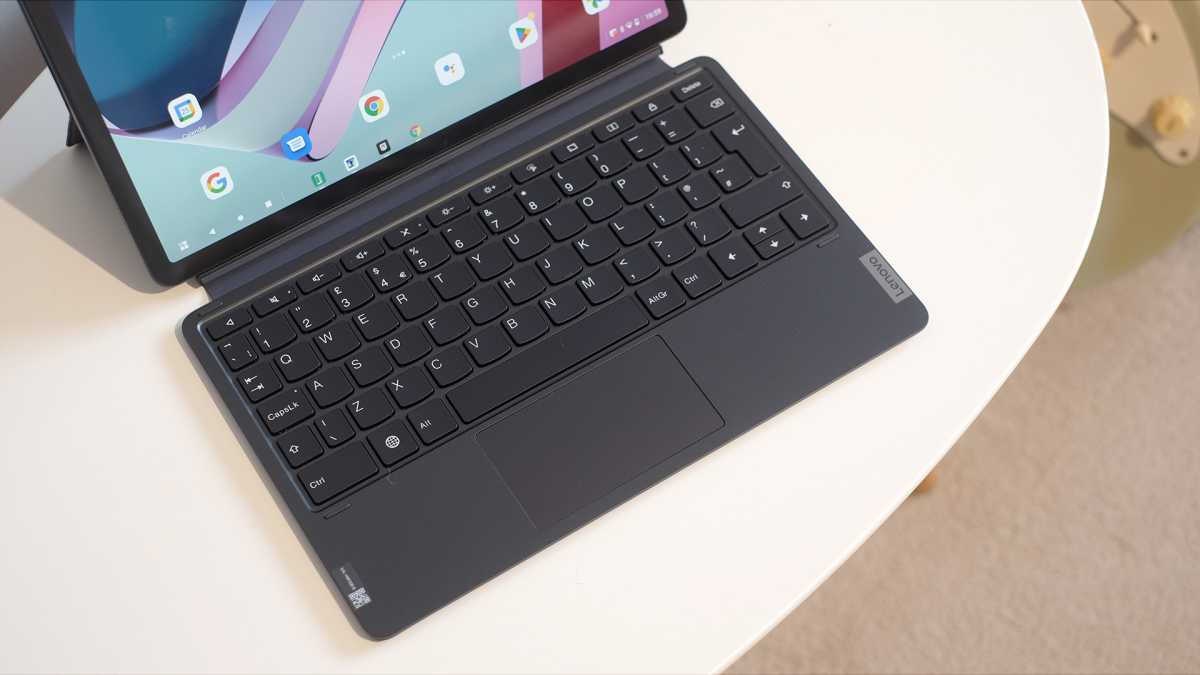
There is a backplate with a tiny compartment for the stylus and an ingeniously integrated hinged stand (also not included as standard). The keyboard component is entirely separate, and both components are magnetised to the tablet.
The Lenovo Tab P11 Pro is about the size of a laptop once both pieces are attached, but both sides of the tablet are well-protected. The keyboard has a nice stiff key plate and proper key action, which makes it feel quite good. We are not comparable to the Microsoft Surface keyboard, though.
There is no keyboard backlight, and the touchpad is made of plastic rather than glass like Microsoft’s.
Display and stylus
- messed up video playback for HDR
- Optimal brightness and contrast
- Rich, individualised colour
The Tab P11 Pro screen is a standout feature, as it is in any good tablet. The aspect ratio of this relatively large 11.2in OLED panel is somewhere between 16:9 and 16:10. With a resolution of 2560 x 1536 pixels, it is actually a 15:9, or 5:3 display.

It has a similar pixel density to an iPad as a result, though iPads appear slightly sharper due to their LCD screens’ more closely spaced, regular sub-pixel structure. Even so, the Lenovo P11 Pro appears slick up close, clearly an improvement over the Samsung Galaxy Tab S6 Lite’s lower pixel density.
As expected from an OLED tablet, colour and contrast are also excellent. If you want to make it simpler to distinguish between more and less saturated app icon designs, for example, you can switch down to a more sRGB-like “Standard” mode from the default colour mode, which has an overly excited appearance.
Peak brightness is also good, and the 120Hz screen provides an especially smooth, high refresh rate appearance when scrolling. The P11 Pro will reach 463 nits indoors, which is more than enough to appear downright unsettling in a dimly lit space. Additionally, unlike many older tablets, there is a “high brightness” mode that activates when you step outside into the sun. The brightness is increased to 622 nits as a result, which is comparable to the power of a passable midrange OLED phone.
Just two problems with the screen exist. At extreme angles, it exhibits the same slight blue-green tint as some OLEDs; however, this effect has largely disappeared in many recent OLED phones.
The tablet has significant issues as well with HDR content. Although YouTube supports HDR 10+ and Dolby Vision, we discovered that HDR content there had very obvious raised blacks. It gives the impression that you are watching on a low-quality LCD display, so hopefully a software update will fix this.
The Precision Pen 3 stylus is also compatible with this tablet, though it is not shipped with it by default. Full-size pen with intuitive tilt detection and 4096 pressure sensitivity levels.

This stylus is more advanced than a standard active stylus because it wirelessly charges when you attach it to a magnetised area on the back of the tablet. Additionally, the tablet itself has a shortcut menu that can be accessed by pressing the single button.
Although the lag, or how far the line drawn lags behind the stylus nib, varies greatly between apps, it still feels good to use. Despite Infinite Painter’s virtual pencils working flawlessly with the pen’s tilt detection, the preinstalled note-taking app lags noticeably behind.
Performance and software
- Exceptional performance, but far below iPad standards
- Android hinders the development of a good desktop UI.
- lacks the app optimization that a Samsung might provide.
Android tablets are frequently criticised for being little more than bulky phones with little in the way of optimization to make them appear more. If you left it up to Google, the majority of that would still be the case; however, the Pixel Tablet could change that in 2023.
Google essentially called it a day after ensuring that Android apps can generally scale to screens of various shapes, resolutions, and sizes. Cheap tablets don’t really care about that, but with more expensive tablets like the P11 Pro, the maker is in charge of it.

When you connect the Tab P11 Pro’s keyboard, which causes it to enter “Productivity mode,” you can finally see the results of this. This interface aims to resemble Windows or Mac OS a little bit more in terms of appearance and feel.
There is a more extensive status and app shortcut bar at the bottom, as well as some touchscreen navigation gestures that are disabled. Additionally, rather than letting the screen fill up automatically, apps load in scalable windows.
The tablet now resembles a laptop more, but there are still some squeaky parts, as is typical with custom UI layers. The main one is that the majority of apps will open as small windows with a portrait orientation, giving the impression that an Android phone emulator has just been launched on, say, a Windows laptop.
The P11 Pro can be utilised as a laptop if desired. But you’ll have to put up with notifications that it’s not up to the task.
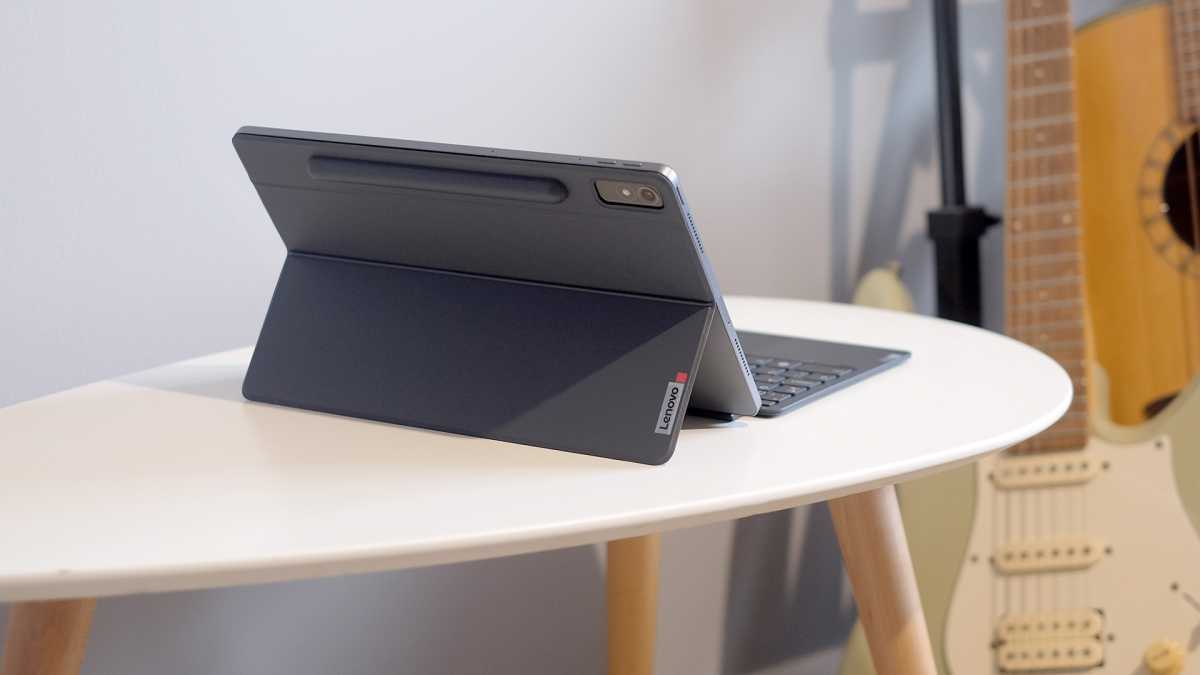
The operating system is controlled by a MediaTek Kompanio 1300T, which resembles the more well-known Dimensity 1200 found in devices like the OnePlus Nord 2 in many ways. It has a good processor, but none of the current iPad models’ processors are even close to it in terms of power.
It earns 2823 points (772 per core) on Geekbench 5, compared to the iPad 10.2’s basic score of around 3300 and the iPad 10.9’s score of roughly 4200.
When you take a look at a GPU-driven test like 3D Mark’s Time Spy, the gap widens. The P11 Pro achieves 4422 compared to the iPad 10.9’s cheap 7300 and iPad 10.2’s more expensive 8600.
camera power and batteries
- mediocre rear camera
- mediocre but practical front camera
- Long-lasting batteries for light uses
The Samsung Galaxy Tab S8, which has a screen that is comparable in size to that of the Lenovo P11 Pro, has a battery that is 8000mAh in size.
It lasts a long time while playing video, as is typical for Lenovo tablets. It lasts 12.5 hours while streaming YouTube, which is a little under Lenovo’s claimed 14 hours but close enough to make that seem possible at lower brightness or when using a different app.
On the other end of the spectrum, our testing indicates that the tablet should support 3D gaming for about 5.5 hours.
The cameras work well, but the battery life? Not really. A single 13Mp rear camera with a flash and an 8Mp front camera are both featured on the P11 Pro.
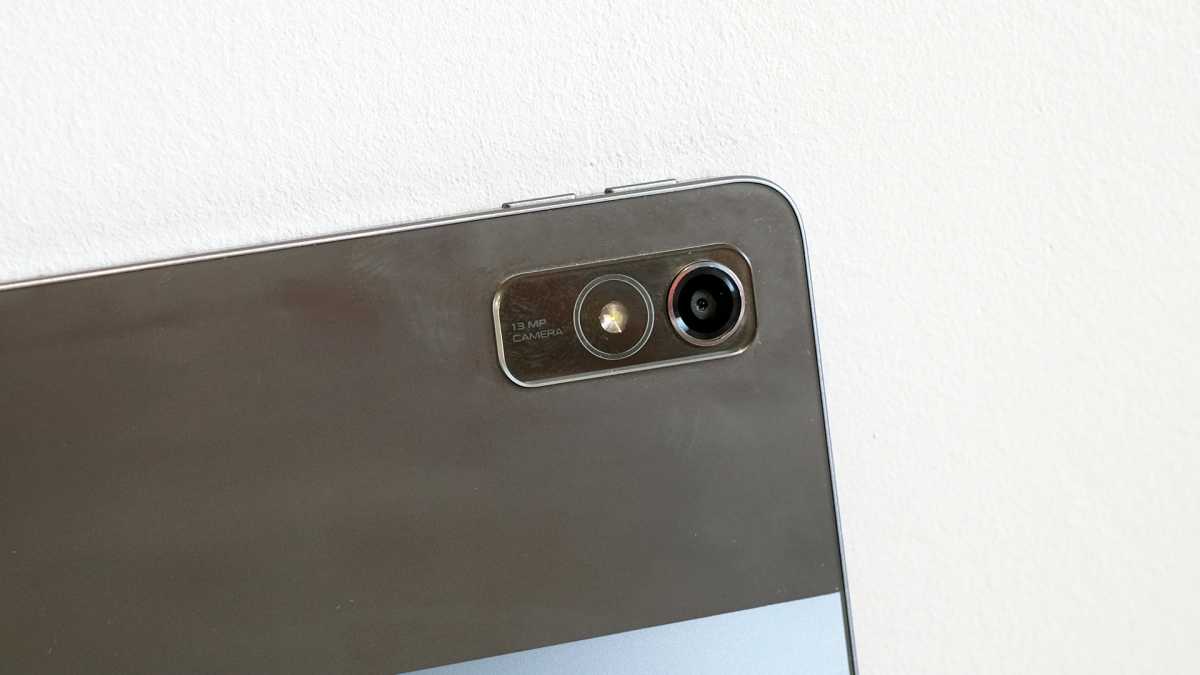
Stills will be noticeably less appealing than those of any recent phone that costs more than, say, £180. Even during the day, daytime images are rarely good because the camera sensor is too small. Nighttime images are even worse.
With a 4K resolution, the Lenovo P11 Pro’s rear camera can also record video. But because there is no software stabilisation, handheld clips may appear jerky.
Despite being of lower quality, the front camera’s 8Mp resolution is more notable, mainly because it will perform better for video chat than the typical laptop webcam. Even in slightly murky indoor lighting, this front camera can capture a good amount of facial detail, despite lower light video appearing quite noisy. Although the hardware on your phone might still be superior, using the P11 Pro for video calls is a smart move.
Features
- Android 12
- 2560 x 1536 OLED display, 11.2″
- Four speakers
- Kompanio 1300T SoC from MediaTek
- 256GB maximum storage
- 8GB maximum RAM
- 13 MP in the back
- front camera 8 MP
- 8200 mAh of power
- 20 W of power
- 263.7 x 166.7 x 6.8mm
- 480g


